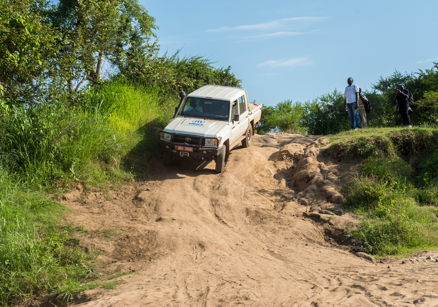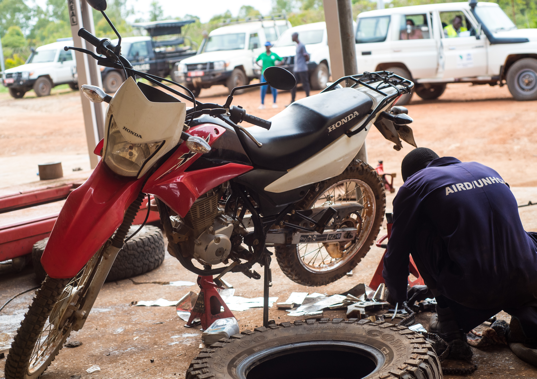Logistics coordinator, Moses Lumbuku, at the AIRD Uganda program explains how fleet management works in the context of humanitarian work.
What exactly is fleet management and how does it play out in the humanitarian space?
Fleet management refers to all the actions that are put in place to keep a fleet running efficiently, on time, and within budget. It involves managing all the different resources that support the entire system such as vehicles, people and fuel.
 As humanitarian work revolves around both emergency and development settings, fleet management must involve a high level of flexibility and understanding of the context within which agencies operate, the people that are served and the locations in which they are located.
As humanitarian work revolves around both emergency and development settings, fleet management must involve a high level of flexibility and understanding of the context within which agencies operate, the people that are served and the locations in which they are located.
These locations are typically very distant and remote, with oftentimes extremely poor road networks. Humanitarian partners nonetheless must travel these distances and trust that transportation will be as smooth as possible as they deliver on areas such as WASH, security, protection and community service interventions. Depending on the situation, such as during emergencies, dispatch of vehicles and assets might be expected within a very short period of time.
In spite of the fact that logistics services within humanitarian work differ from typical business activities in that they are not for profit, the level of planning and consultations are no less complex and require much planning and consultation, and there are strict Standard Operating Procedures that must be followed.
How long has AIRD Uganda been involved in fleet management?
From its inception 15 years ago in 2006, AIRD recognised and appreciated the criticality of vehicles and the vital role they play in ensuring the movement of people and goods in the humanitarian space. It is for this reason that one of the areas AIRD chooses to specialise in is in the field of logistics and management of the fleet of vehicles that supports these activities.
As the first of AIRD’s operations, the Uganda operation has been involved in these activities from the very start, and continues to do so to date.
What is AIRD Uganda’s approach to fleet management?
 Fleet management systems are employed to track, monitor and report on the availability and location of every vehicle and asset under the operations’ management. Depending on the need, a suitable vehicle will be dispatched along with a well-trained driver.
Fleet management systems are employed to track, monitor and report on the availability and location of every vehicle and asset under the operations’ management. Depending on the need, a suitable vehicle will be dispatched along with a well-trained driver.
Within the Uganda program, fleet management is handled on behalf of UNHCR whose fleet comprises 644 vehicles that include ambulances, buses for refugee transportation, water bowsers for emergency water trucking and cargo trucks for transporting non-food items. 52 cargo trucks that are under the right of use facilitate transportation of medicines to settlement hospitals that offer health services to refugees, as well as sanitary kits to women of reproductive age. The same trucks transport core relief items that are distributed to refugees to enable them settle in their new homes. Light vehicles also aid other program and administrative duties.
Nine workshops across all refugee settlements in Uganda run with over 120 contracted mechanics who support with routine maintenance and servicing of vehicles, which also include 630 motorcycles and over 130 generators that generate power for settlement hospitals, field offices and water pumping.
Additionally, without fuel, the vehicles and assets mentioned would not be operable and AIRD Uganda also manages nine fuel storage facilities across 9 refugee settlements to power the UNHCR partner fleet.
Through managing of all fleet activities, the donors who have entrusted us with this function are able to realise enhanced compliance, improved efficiency, and reduced operating costs through centralising their fleet management under one logistics partner (AIRD).
